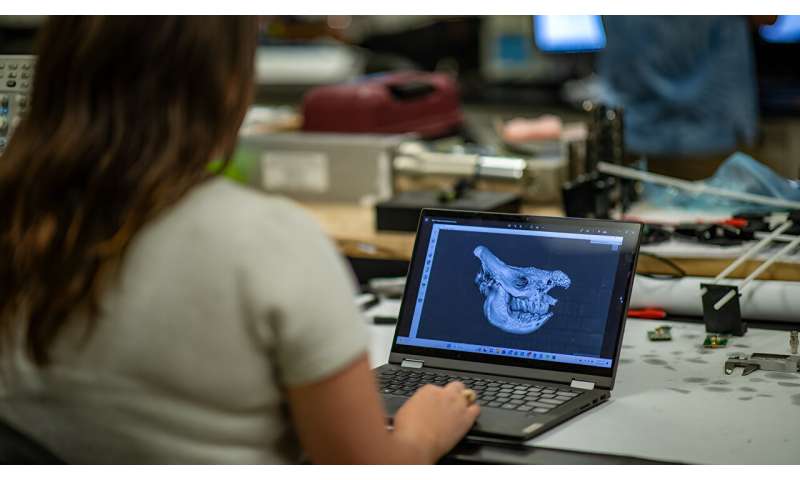Hillis presents crucial conservation research at prestigious convention

While humans view it as a valuable artifact, a symbol of status, or even a misguided cure for a deadly disease, to a rhinoceros, its horn means survival. Rhinos use them to protect themselves, gather food and care for their young. Unfortunately, horns are highly coveted in South Africa, and since the 20th century, 80% of the rhino population has been poached.
Jordan Hillis, a graduate student in the Department of Nuclear Engineering at Texas A&M University, is working with her advisor, associate professor Dr. Craig Marianno, to protect these endangered animals by injecting radiation into their horns to deter poachers.
Hillis was selected to present a poster over the first stage of her doctorate, investigating the quantity of radiation that can be injected into a rhino's horn without harming them, at the 2023 Nuclear Energy Agency Global Forum Rising Stars Workshop in Nuclear Education, Science, Technology and Policy.
She traveled to the Massachusetts Institute of Technology to attend the scientific conference, which started specifically to promote women in all realms of nuclear engineering. Hillis hopes to destigmatize radiation and showcase its lesser-known applications by presenting this project.
"There are so many well-versed applications you can do with radiation such as nuclear medicine, locating cancer in your body and various therapies," Hillis said. "It has a very bright future, so hopefully people will be more interested and seek it out as a solution rather than as a deterrent for different situations."
Since this conservation project has never been done before, the possibilities for applying the outcomes of this research are endless.
"We are kind of blazing a trail because once you do this for one species, you can do it for the other four species of rhino," Hillis said. "And once you do it to a rhino, can you do it to an elephant? Elephant tusks are ivory, so they're sought after. Can you do it for other animals who are endangered in different aspects?"
The plan is to put a radioactive source in the horn to discourage handling and allow the artifact to be detectable at portal monitors in the hopes of blocking poachers from shipping them to their customers.
"Not only am I making significant impacts with this research, but what I'm doing is being recognized, which may help me achieve my future career goals," Hillis said. "It just makes me love the work so much more."
Hillis' groundbreaking project was recognized out of countless others in the department.
"Being nominated by the entire Nuclear Engineering Department at Texas A&M is such an honor," Hillis said. "I'm almost speechless because as a woman in nuclear or just being an individual recognized within my industry is incredible.
Provided by Texas A&M University College of Engineering